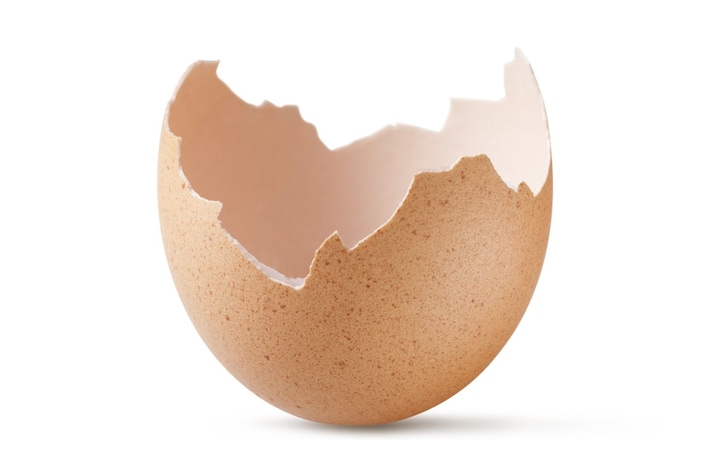
Whether you are having a simple egg dish for breakfast, pairing it with your favorite breads or even baking a special treat, you must ensure that your eggs are safe to eat. However, that can be a slightly difficult task as the hard shells don’t give it away easily and not many people think to take a whiff of raw eggs. Below, we have compiled a list of signs to note to determine spoilage in eggs:
1. Strange Odor
One of the first indicators of spoiled eggs is a noticeable change in odor. Fresh eggs typically have a neutral or slightly grassy scent. However, if an egg emits a foul or sulfurous odor, resembling rotten or sulfuric notes, it is a clear sign of spoilage. Trust your sense of smell and discard any eggs with an off-putting odor to avoid potential foodborne illness.

2. Discoloration
Next, you can do a visual inspection of the eggs to checks for signs of spoilage. If unspoiled, they will have a clean, uniform shell without any cracks or blemishes. If you notice discoloration, such as dark or cloudy spots on the shell, it may indicate bacterial contamination or mold growth. Additionally, egg whites that appear discolored or cloudy instead of clear and translucent can signify spoilage. If you have any doubt, discard eggs with any visible abnormalities to prevent food poisoning.
3. Unusual Texture
Another telltale sign of spoiled eggs is a change in texture. Fresh eggs have a smooth and firm texture, both externally and internally. However, spoiled eggs may exhibit noticeable changes in texture, such as slimy or runny egg whites, or thick and viscous yolks. These alterations suggest bacterial growth and degradation of the egg's quality, making them unsafe for consumption.

4. Floating Eggs
A simple yet effective method to test egg freshness is the float test. Fill a bowl or glass with water and gently place the egg inside. Fresh eggs typically sink and lie flat on the bottom of the container due to their high density. In contrast, spoiled eggs may float or stand upright due to the accumulation of gases produced by bacterial activity. If an egg floats, it is best to discard it to avoid potential foodborne illness.
5. Cracked Shells

Inspecting eggshells for cracks is essential for ensuring egg safety. While small hairline cracks may not always indicate spoilage, they provide a pathway for bacteria to enter the egg, increasing the risk of contamination. Discard any eggs with visible cracks, as they may harbor harmful pathogens that can cause foodborne illness.
6. Excessive Condensation
Excessive condensation inside the egg carton or on individual eggshells can be a sign of spoilage. Moisture buildup can create an ideal environment for bacterial growth, compromising the safety and quality of the eggs. If you notice significant condensation, carefully inspect the eggs for other signs of spoilage and consider discarding any affected eggs.
7. Off-putting Taste
While not always immediately apparent, spoiled eggs may have an unpleasant taste. If you notice that your eggs have a sour or unpleasant taste, you can be sure that there has been bacterial contamination or spoilage. When cooking or consuming eggs, pay attention to any unusual flavors and discard immediately as required.
8. Expired Expiration Date

Before cooking,make sure to check the expiration or "best by" date on the egg cartons to ensure that it is still fresh and safe for consumption. Although expiration doesn’t always signify spoilage, eggs that have gone past their expiration date have significantly increased chances of being spoiled. Always adhere to expiration dates and consume eggs within the recommended timeframe to minimize the risk of foodborne illness.
9. Mold Growth
Although this is less commonly seen, the presence of mold on eggshells or inside the egg carton is a clear indication of spoilage. Mold growth can occur due to improper storage conditions or extended storage periods. Moldy eggs are NOT salvageable as they contain harmful toxins produced by mold spores.
10. Strange Rattling Sound
When shaken, fresh eggs typically produce minimal sound or a muted sloshing noise. However, spoiled eggs may produce unusual sounds, such as excessive sloshing or rattling, indicating that the egg contents have become watery. If you detect any unusual sounds when shaking eggs, it is best to discard them to avoid potential health risks.

Conclusion
If you eat eggs, then you must be vigilant and pay careful attention to all of the above. By recognizing the signs outlined above, you can now easily tell spoiled eggs apart from fresh ones. Again, when in doubt, just discard the eggs. Prevention is better than cure!
;Resize,width=767;)
